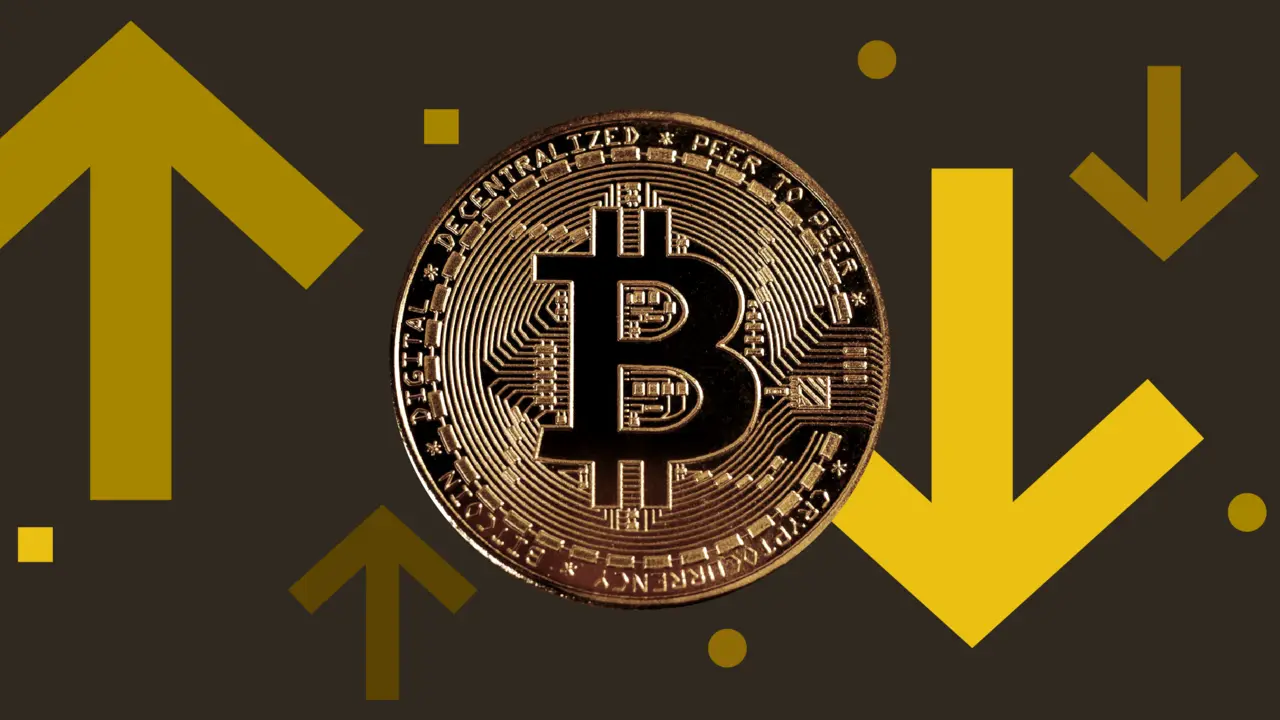Will Bitcoin Rise Again?
Bitcoin’s future remains uncertain, influenced by historical volatility and market dynamics. Key factors include institutional adoption, regulatory developments, and technological advancements that shape investor sentiment.
While bullish forecasts suggest a potential rise due to increased acceptance, regulatory challenges and market saturation pose risks.
The interplay of these elements indicates a complex landscape. Understanding these factors can provide insights into Bitcoin’s trajectory and the broader cryptocurrency market. Further exploration reveals more about the variables impacting Bitcoin’s value.
Principal Conclusions
ShowUnderstanding Bitcoin’s Historical Performance

How has Bitcoin’s historical performance shaped its current market perception?
Bitcoin’s price trajectory since its inception in 2009 reveals significant volatility, characterized by dramatic peaks and troughs.
Remarkably, Bitcoin reached its all-time high near $64,000 in April 2021, driven by increased institutional adoption and retail interest.
However, subsequent corrections have illustrated the cryptocurrency’s susceptibility to market sentiment and regulatory developments, resulting in substantial declines.
Subsequent corrections highlight Bitcoin’s vulnerability to market sentiment and regulatory shifts, leading to significant downturns.
Historical data indicate that Bitcoin has experienced multiple bull and bear cycles, contributing to an ongoing debate regarding its status as a store of value versus a speculative asset.
This historical context influences investor sentiment today, as potential buyers weigh past performance against current market conditions, leading to a cautious yet optimistic outlook among some market participants.
Key Factors Influencing Bitcoin’s Value
While various factors contribute to Bitcoin’s valuation, market dynamics, regulatory developments, and technological advancements stand out as key influences.
Market dynamics, including supply and demand fluctuations, greatly impact Bitcoin’s price. For instance, increased institutional investment can drive prices upward, while market sentiment can create volatility.
Regulatory developments also play a vital role; as governments establish clearer frameworks, investor confidence may increase, potentially boosting prices.
In addition, technological advancements, such as improvements in blockchain efficiency or security measures, can enhance Bitcoin’s appeal and usability.
As the cryptocurrency landscape evolves, these factors interact intricately, shaping Bitcoin’s perceived value and future trajectory.
Understanding these elements is essential for evaluating Bitcoin’s potential for resurgence in the market.
The Role of Regulation in Cryptocurrency Markets

Regulation plays a critical role in shaping the landscape of cryptocurrency markets, influencing both investor confidence and market stability.
Government policies regarding compliance can either facilitate growth or impose restrictions, impacting the overall dynamics of digital assets.
Additionally, global regulatory trends reveal varying approaches that may further affect the adoption and value of cryptocurrencies like Bitcoin.
Impact of Government Policies
As governments around the world grapple with the complexities of cryptocurrency, the impact of their policies on market dynamics has become increasingly evident.
Regulatory frameworks can greatly influence investor confidence, market liquidity, and overall adoption rates.
For instance, countries that adopt clear regulations often experience increased participation from institutional investors, which can stabilize prices.
Conversely, nations imposing strict bans or heavy taxation may drive activity underground, resulting in reduced market transparency.
Data indicates that positive regulatory news often correlates with price surges, while negative announcements tend to trigger declines.
The balance between fostering innovation and ensuring consumer protection remains a critical challenge, as the evolving nature of cryptocurrency necessitates adaptive legislative approaches to sustain market growth and stability.
Compliance and Market Stability
Effective compliance with regulatory frameworks is vital for fostering stability in cryptocurrency markets, as it creates a structured environment that promotes trust among investors.
Regulatory oversight can mitigate risks associated with fraud and market manipulation, contributing to a more predictable trading landscape.
Studies indicate that markets with clear regulatory guidelines experience lower volatility, as investor confidence increases amid reduced uncertainty.
Additionally, compliance encourages the participation of institutional investors, who often require stringent adherence to regulations before committing capital.
Data from various exchanges shows that jurisdictions with robust regulatory frameworks tend to attract higher trading volumes and liquidity.
Therefore, the interplay between compliance and market stability plays an important role in determining the long-term viability of cryptocurrencies as an investment asset.
Global Regulatory Trends
While the cryptocurrency landscape continues to evolve, global regulatory trends are increasingly shaping market dynamics and investor behavior.
As jurisdictions around the world develop frameworks for cryptocurrency, the implications for market stability and investor confidence become pronounced. Regulatory clarity offers protection against fraud and volatility, while also fostering innovation.
| Region | Regulatory Approach | Key Developments |
|---|---|---|
| North America | Varying state regulations | SEC scrutiny of exchanges |
| Europe | Extensive frameworks | MiCA regulation proposal |
| Asia-Pacific | Diverse policies | China’s crypto ban |
| South America | Emerging regulations | Brazil’s proposed framework |
| Africa | Limited regulation | Nigeria’s CBDC initiative |
These trends highlight the need for a balanced regulatory approach that encourages growth while ensuring market integrity.
Technological Advancements and Their Impact

Technological advancements play a pivotal role in shaping the future of Bitcoin, influencing both its scalability and security.
Innovations such as the Lightning Network enhance transaction speed and reduce costs, addressing long-standing scalability challenges.
Additionally, developments in cryptographic techniques bolster security, making the network more resilient against potential attacks.
The implementation of smart contracts on platforms like Bitcoin SV introduces new functionalities, potentially expanding Bitcoin’s use cases.
Developments in cryptographic techniques enhance Bitcoin’s security, while smart contracts expand its potential use cases and functionalities.
Moreover, ongoing enhancements in mining technology, including energy-efficient hardware, can mitigate environmental concerns, which may improve public perception.
As these advancements unfold, they are likely to have a significant impact on Bitcoin’s adoption and overall market viability, creating a foundation for its potential resurgence in value and utility.
Market Sentiment and Investor Behavior
The interplay between technological advancements and market dynamics greatly shapes investor sentiment and behavior toward Bitcoin.
Market participants often react to news related to regulatory developments, security breaches, and adoption rates, which can lead to significant price fluctuations.
Data indicates that positive sentiment, fueled by institutional investments and broader acceptance, tends to correlate with rising prices.
Conversely, negative events, such as market crashes or regulatory crackdowns, can trigger panic selling, highlighting the volatility inherent in cryptocurrency markets.
Additionally, social media and online forums play an essential role in shaping public perception, often amplifying bullish or bearish trends.
Understanding these behavioral patterns is vital for predicting Bitcoin’s potential trajectories in an ever-evolving landscape.
The Competition: Other Cryptocurrencies

The competitive landscape of cryptocurrencies includes a range of altcoins that offer unique features and innovations in blockchain technology.
These developments influence market sentiment and trends, often impacting Bitcoin’s dominance and investor behavior.
Understanding these dynamics is essential for evaluating Bitcoin’s potential resurgence in value.
Altcoin Market Dynamics
While Bitcoin often dominates headlines, the altcoin market presents a complex landscape shaped by various factors, including investor sentiment, technological advancements, and regulatory developments.
Altcoins, such as Ethereum, Ripple, and Cardano, have attracted significant investment due to their unique features and use cases.
Market capitalization data from October 2023 indicates that altcoins collectively account for approximately 40% of the total cryptocurrency market, demonstrating their substantial presence.
Volatility remains a consistent characteristic, with price fluctuations driven by speculation and news events.
Additionally, regulatory scrutiny can impact altcoin performance differently than Bitcoin, as some projects may face greater challenges.
Understanding these dynamics is essential for investors looking to navigate the altcoin market effectively, especially in light of Bitcoin’s fluctuating dominance.
Innovations in Blockchain Technology
As advancements in blockchain technology continue to emerge, various cryptocurrencies are positioning themselves as formidable competitors to Bitcoin. These innovations often focus on enhancing transaction efficiency, scalability, and security.
Notable contenders in this evolving landscape include:
- Ethereum: Pioneering smart contracts, allowing for programmable transactions and decentralized applications.
- Cardano: Emphasizing sustainability and scalability through a unique proof-of-stake consensus mechanism.
- Solana: Offering high throughput and low transaction costs, catering to decentralized finance (DeFi) applications.
These developments not only challenge Bitcoin’s dominance but also highlight the diverse applications of blockchain technology.
As these cryptocurrencies innovate, they may attract users seeking alternatives to Bitcoin, potentially reshaping the competitive dynamics within the cryptocurrency market.
Market Sentiment and Trends
How do market sentiment and prevailing trends influence the competitive landscape among cryptocurrencies?
Market sentiment, driven by investor perception, greatly affects the performance and adoption rates of various cryptocurrencies.
For instance, during bullish phases, altcoins often gain traction as investors diversify their portfolios, potentially at Bitcoin’s expense.
Conversely, in bearish scenarios, Bitcoin typically retains its status as a safe haven, leading to increased market dominance.
Recent data indicates a growing interest in decentralized finance (DeFi) and non-fungible tokens (NFTs), which has further intensified competition.
As new projects emerge, established cryptocurrencies must adapt to maintain relevance.
Ultimately, market sentiment and trends play an essential role in determining which cryptocurrencies prevail in an increasingly crowded marketplace, influencing investment decisions and future innovations.
Predictions From Experts and Analysts
What insights can be gleaned from expert analyses regarding Bitcoin’s future trajectory? Analysts offer a range of predictions based on market trends, blockchain technology developments, and economic indicators.
Their assessments can be categorized as follows:
- Bullish Forecasts: Some experts predict a potential surge in value, driven by institutional adoption and increasing global acceptance.
- Bearish Outlooks: Others caution against volatility, highlighting regulatory challenges and market saturation as possible deterrents.
- Neutral Stance: A segment of analysts suggests a stabilizing phase, where Bitcoin may oscillate within a defined range, reflecting maturity in the cryptocurrency market.
These perspectives illustrate the complex factors influencing Bitcoin’s future, emphasizing the necessity for cautious evaluation of its evolving landscape.
Investing Strategies for the Future of Bitcoin

While the future of Bitcoin remains uncertain, investors can adopt various strategies to navigate its volatility and potential growth.
One approach is dollar-cost averaging, which involves investing a fixed amount regularly, minimizing the impact of market fluctuations.
Diversification is another key strategy; investors might consider allocating a portion of their portfolio to Bitcoin while maintaining exposure to other asset classes.
Investors should consider diversifying their portfolios by allocating a portion to Bitcoin while retaining exposure to other asset classes.
Additionally, utilizing technical analysis can help identify entry and exit points based on market trends.
Staying informed about regulatory developments and technological advancements is essential, as these factors can greatly influence Bitcoin’s price.
Finally, employing risk management techniques, such as setting stop-loss orders, can help protect investments during downturns, ensuring a balanced approach to Bitcoin investment.
Wrapping Up
To summarize, Bitcoin’s future remains uncertain, heavily influenced by historical performance, regulatory changes, and market sentiment.
Significantly, despite its volatility, Bitcoin has experienced a substantial return on investment, with an average annual growth rate of around 200% since its inception in 2009.
This statistic underscores the cryptocurrency’s potential for recovery and growth, prompting continued interest from both investors and analysts alike.
As the market evolves, strategies will need to adapt to navigate the complexities of this digital asset.







